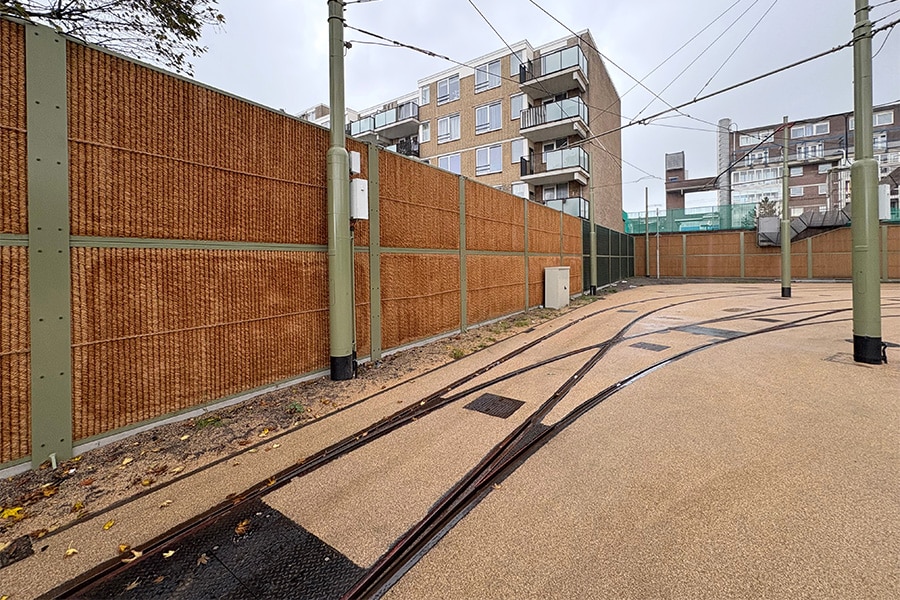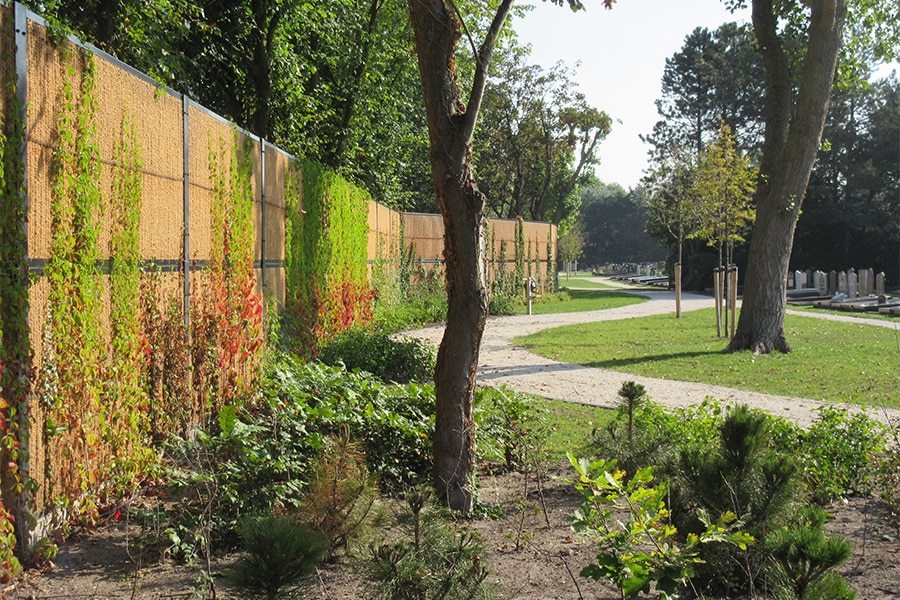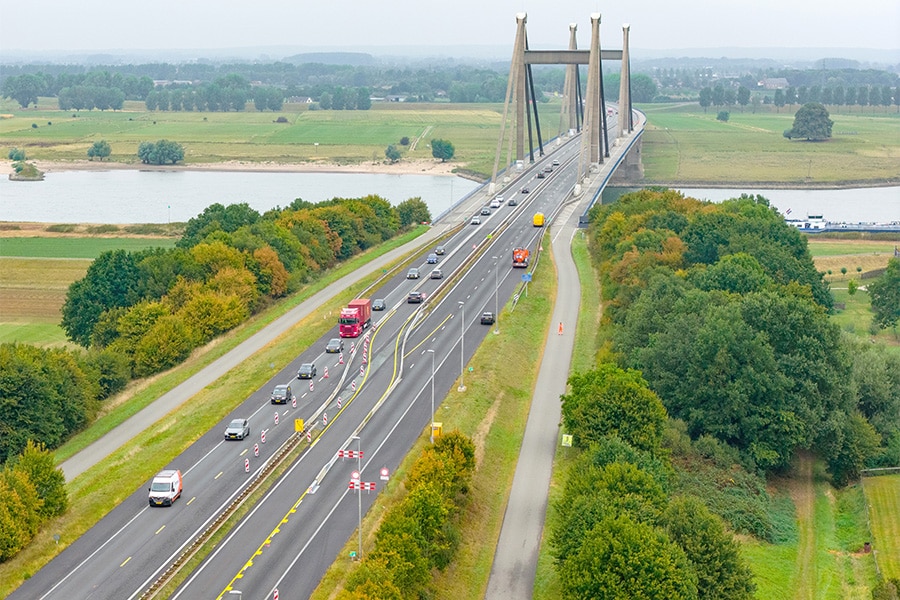
Kokosystems supplied Kokowall® noise barriers for renovated streetcar depot Scheveningen
The streetcar depot in Scheveningen has undergone a complete metamorphosis. New tracks, new streetcars, new infrastructure. To reduce noise and reflection for the surroundings, a specially designed Kokowall® sound barrier was placed around the outdoor area. Implementation was in the hands of Kokosystems, commissioned by Van den Heuvel Lightrail.
HTM's streetcar depot at Hartsenhoekplein is undergoing a major overhaul. The existing depot will be partially renewed to make it suitable for the new TINA streetcars with lower boarding and more capacity. Everything must also meet current energy and noise requirements. During the renovation the outside area and tracks will also be tackled.

High absorbing noise barrier
A noise barrier has been installed around the outdoor area that not only provides exceptional performance technically, but also aesthetically: Kokowall®. The screens consist of a combination of completely non-combustible, perforated sheets and highly absorbent Kokowall® panels with coir fiber in the middle section. “Along the railroad side, these aluminum perforated sheets were deliberately chosen because they are alongside homes,” says Arjan Kick, project manager at Kokosystems. “This version is the most fireproof and fits well in the urban environment. Furthermore, the combination with Kokowall® panels provides optimal noise reduction and a natural look.”
“The frames and panels are powder-coated in RAL 6013, or reed green, the same color as the streetcar depot's light poles, allowing the whole thing to blend harmoniously into the scene.” Meanwhile, the screens have been beautifully planted, contributing to a green and peaceful appearance in a place where sound would otherwise quickly reverberate or reverberate between concrete and stone.

No column style the same
When Kokosystems became involved in the project, the foundation posts were already in the ground. “That turned out to be the biggest challenge,” Kick says. “No foundation style was evenly spaced or in a straight line, so we couldn't follow the standard pile plan. Part of the structure was anchored to existing foundations, while in other positions new ones were used. For each position we provided custom work, from base plate to panel, and in a short time frame.” Construction space was minimal, with overhead lines and limited passage between tracks. “With GPS measurement and accurate preparation, we did manage to execute the superstructure in a completely straight line. Thus, together with the executing parties, we achieved a tight end result.”
Green incorporation, urban precision
By choosing highly absorbent screens, nuisance to local residents is limited and a quieter sound image is created. At the same time, the green finish provides a friendly appearance, even from the street side. “This project shows what you can achieve together in a short period of time,” says Kick. “Technically challenging, civil and urban planning interesting. And above all, a great example of how customization contributes to a quieter, well-embedded infrastructure.”




